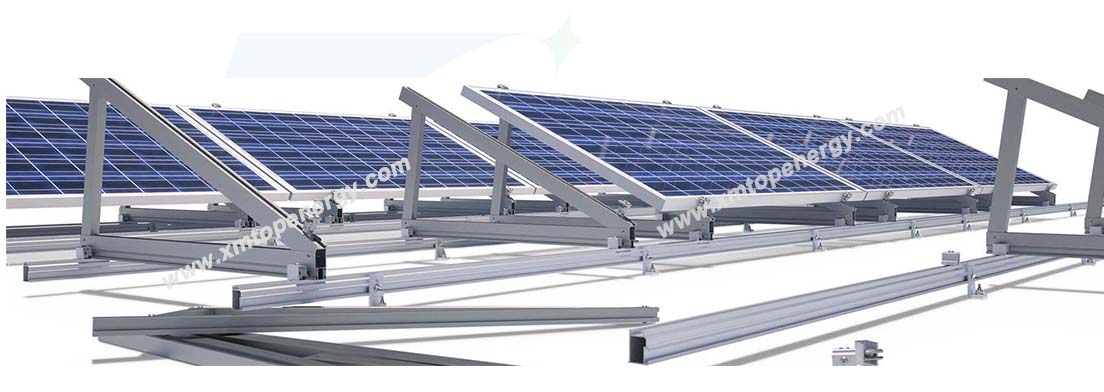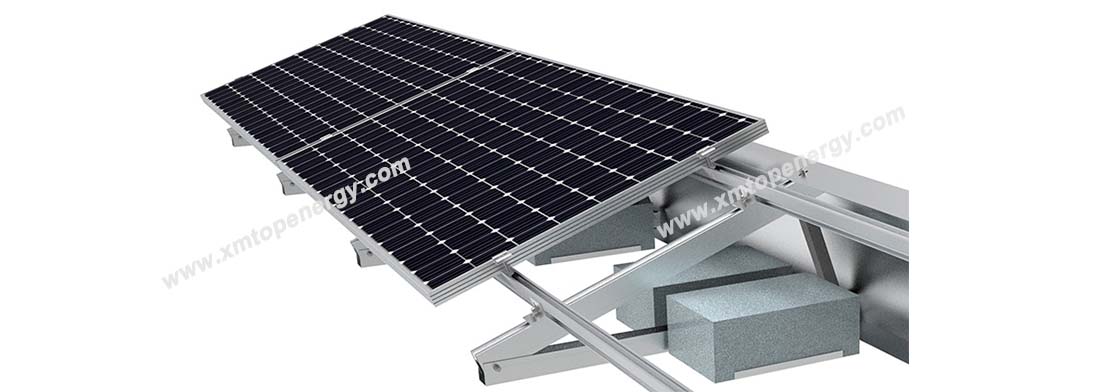When installing solar panels on flat roofs, one of the first key decisions installers face is choosing between ballasted or penetrative (mechanically fixed) solar mounting systems. Each method comes with its own advantages, limitations, and long-term implications. Let’s dive into the details to help you determine which is more suitable for your project.

Overview:
Ballasted systems use weight (typically concrete blocks) to secure the racking structure to the roof without drilling into it. The panels are held in place by gravity.
Pros:
Non-penetrative: No holes are drilled, preserving the waterproofing integrity of the roof.
Faster Installation: No need for structural anchoring, reducing labor time.
Ideal for Certain Roof Types: Especially beneficial for membrane or older roofs where penetrations could compromise durability.
Cons:
Heavy Loads: Ballasted systems significantly increase the roof load, which may not be suitable for buildings with limited structural capacity.
Wind Uplift Concerns: In high-wind areas, additional ballast or wind deflectors are required, further increasing weight and complexity.
Limited Tilt Options: Ballasted systems often have fixed tilt angles to minimize wind resistance, which might reduce energy yield optimization.
Maintenance Accessibility: The concrete blocks and tightly packed configurations can complicate roof access for maintenance.
Overview:
Penetrative systems are physically anchored to the roof structure using bolts, screws, or other fasteners. They usually require flashing and sealing around each penetration to prevent water ingress.
Pros:
Lightweight: No need for ballast means a much lighter system, reducing structural stress.
High Wind Resistance: Anchored systems perform better in wind-prone areas due to their secure attachments.
Flexible Tilt & Layout: Easier to customize panel angles for maximum solar production.
Cons:
Roof Penetrations: Each attachment point is a potential risk for leaks if not properly sealed and maintained.
Waterproofing Challenges: Improper flashing or poor workmanship can lead to long-term water damage.
Longer Installation Time: Drilling and sealing increase labor hours and require skilled workmanship.
Permitting & Engineering: May require additional structural assessment and approvals before installation.

|
Criteria |
Ballasted Mounting |
Penetrative Mounting |
|
Roof Age/Condition |
Better for older or delicate roofs |
Requires newer, structurally sound roofs |
|
Structural Load Capacity |
Needs strong support for added weight |
Lighter load on structure |
|
Climate/Wind Zones |
Less ideal in high-wind zones |
More stable in extreme weather |
|
Installation Speed |
Quicker to install |
Takes longer due to drilling |
|
Long-Term Waterproofing |
No direct risk |
Potential risk if not sealed properly |
|
Maintenance Needs |
May limit access |
Easier access after install |
There is no one-size-fits-all answer. The “better” option depends on:
Roof structure and material
Climate and wind zone
Building owner’s tolerance for penetrations
Project budget and timeline
For buildings with solid structural capacity and located in calm wind zones, ballasted systems can be a safe and fast choice. On the other hand, in hurricane-prone areas or where maximizing energy output is key, a penetrative system is more reliable and efficient.

 Xiamen TopFence Co.,Ltd.
Xiamen TopFence Co.,Ltd. No. 77, LingXia South Road, Huli District, Xiamen City, Fujian, China
No. 77, LingXia South Road, Huli District, Xiamen City, Fujian, China Tel: +8613365923720
Tel: +8613365923720
 Email: info@xmtopfence.com
Email: info@xmtopfence.com
 IPv6 network supported Sitemap
| XML
| Blog
| Privacy Policy
IPv6 network supported Sitemap
| XML
| Blog
| Privacy Policy


